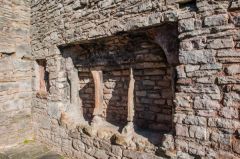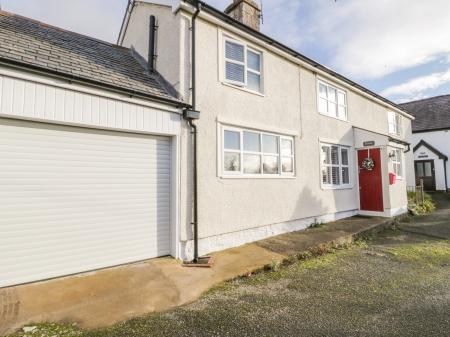
History
Though Denbigh Friary was never very large, it must have gained considerable importance, for in the 16th century the Bishop of St Asaph lived here in a 'Bishop's Chamber' in the east range of the cloister buildings.
Those buildings must have been extensive, for records at the time of the Dissolution mention a hall, kitchen, buttery, brewhouse, stables, gardens, orchards, and terraces, among other buildings, so we can surmise that the Friary must have held a sizeable portion of land on the edge of Denbigh.
Despite this, when the Friary was suppressed in 1537 there were only four friars in residence. The Bishops of St Asaph leased the monastic property after the Dissolution of the Monasteries, and part of the friary was converted to provide private dwellings, while the church was used for storing wool.
Nearby Abbey Cottage was built from the friary's dormitory and refectory. For much of the 19th century the church was used as a malthouse, but in 1898 a fire left the building in ruins, and it has never been restored.

What to See
The friary ruins consist of the original quire, or east end of the church, and part of the west end. The quire was the exclusive domain of the friars, while the general public used the west end.
On the south side is a doorway which once led to the friary cloister. There would have been buildings around each side of the cloister but these are long gone, and today the church is surrounded by nearby buildings on all sides, and somewhat overgrown with weeds in places.
At the west end of the church is a well, but this is not an original feature; it was dug long after the building ceased to be used as a friary. It would have been quite odd to have a well inside the church!
The most noticeable feature is the east window, which features lovely 15th-century tracery. The window is now blocked with bricks, but the tracery still remains.

Note: I've said the Friary was founded in 1289, which is what the CADW sign inside the friary church says. However, the Grade II* listing text from English Heritage says it was founded the period 1270-90. I think we can safely say it dates to 'the late 13th century' and leave it at that!
Visiting
It's a bit of a challenge to find the Friary. It isn't well signposted; indeed, I wouldn't be surprised if many local residents don't know how to find it. The friary is up a small lane just off the Rhyl Road, north of its junction with the A543 (near the hospital). It is about a 15-20 minute walk from central Denbigh, and walking may be the best way to visit, though there is parking along nearby roads.








 We've 'tagged' this attraction information to help you find related historic attractions and learn more about major time periods mentioned.
We've 'tagged' this attraction information to help you find related historic attractions and learn more about major time periods mentioned.




